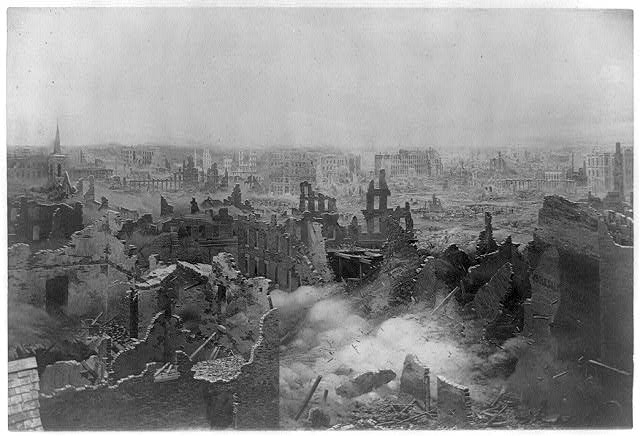Willoughby: Fire extinguishers — important items from the beginning of Aspen

Library of Congress/Courtesy photo
You, hopefully, know where your fire extinguisher is and how to use it. We take them for granted and rarely think about them. That was not how it was in the early days of Aspen.
One of the most calamitous American disasters happened about a decade before the early pioneers of Aspen arrived: the Great Chicago Fire of 1871. It destroyed 17,000 structures, killed somewhere between 120 and 300 people, and left 90,000 homeless. It consumed over three square miles. At that time, Chicago had a population of 340,000.
It was so devastating an event that across the nation people began taking action to prevent a fire like that in their community. Denver enacted building codes resulting in much of Denver being built with brick. Cities, like Aspen, at least in their downtown centers, replaced large wood structure construction with stone and brick instead.
Cities formed additional fire departments, and firefighting methods improved. It also sparked, pun intended, an interest in and acquisition of fire extinguishers. They had been around for a long time — the first one patented in 1723 — but they became easier to manufacture and more effective about the time of the Chicago Fire.
The first reporting of a fire extinguisher preventing the spread of a fire in Aspen was in 1897. The headline, Aspen Daily Times, put it in stark terms: “Incipient Blaze — What Might Have Been a Serious Conflagration Averted.” The fire was in the basement of a downtown business, the Abbey Saloon. The fire department came quickly, and the fire chief used a Babcock fire extinguisher to put it out. The major danger was from smoke. The fire began because a stick of wood was leaning against the boiler and that spread to “rubbish nearby.” Coincidentally, the extinguisher mentioned was patented the same year as the Great Chicago Fire.
At the turn of the century, a fire extinguisher company representative Thomas Hines was working Aspen. An ad noted it was a dry powder extinguisher, “convenient to handle, harmless and most highly recommended. It should be kept in every house.” A couple months later, he returned to Aspen and did a demonstration in front of the post office. It is interesting that he did it in the evening when the post office was not open.
The Walter Kidde Company came up with a new fire extinguisher in 1924 that used carbon dioxide. The purpose was for Bell Telephone that was experiencing fires in their telephone switchboards. The Aspen Times reprinted a report from Popular Science Monthly on two Ohio chemists who came up with a variation using potassium that worked faster than the soda acid ones at the time. It put out a blaze in 12 seconds — three times faster than previous extinguishers.
The next major potential fire reported on by The Times was in 1940, headlined, “A serious fire was narrowly averted Friday.” The fire was caused by a falling, 550-volt powerline, again in the downtown district at the Aspen Drug Store. The major line fell onto a lower wattage line that severed a ceiling light. The owner, Mr. Parsons, climbed a ladder and pulled the line down; fortunately, even though he felt a large jolt, he was ok. But the line in the exposed area in the ceiling was still sparking-hot. A fire extinguisher was brought over from the neighboring Thorpe’s Garage, and they used it to stop the fire from spreading. They concluded that had it happened at night when the store was closed, there would have been a major fire.
The Times ran a section of the paper titled Household Hints. One that stuck with locals was “a fire extinguisher is essential in every home, and it should be kept in working order.” The Times doesn’t carry that section anymore, so I added it to this column to remind you.
Tim Willoughby’s family story parallels Aspen’s. He began sharing folklore while teaching at Aspen Country Day School and Colorado Mountain College. Now a tourist in his native town, he views it with historical perspective. Reach him at redmtn2@comcast.net.
Details released surrounding Aspen’s Castle Creek Road bike death
A 64-year-old woman was involved in a bicycle accident on Castle Creek Road that resulted in her death on Monday.









